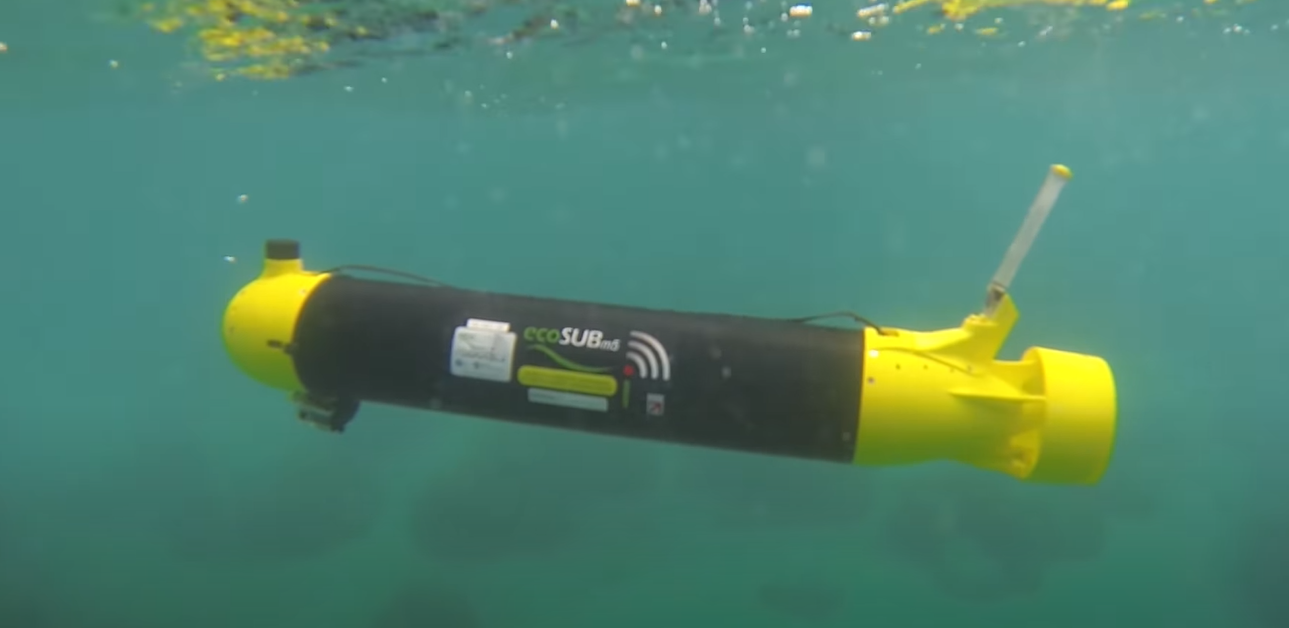Autonomous Underwater Vehicles (AUVs) play a vital role in fields such as hydrocarbon drilling and extraction, marine surveying and aquatic environmental monitoring. An AUV can perform functions in which it is difficult for divers to accomplish, and can descend to depths which would put human operators in danger.
Most AUV products on the market today are large, capable of carrying heavy payloads, and fitted with a large battery to enable them to stay underwater for long periods of time. This type of product suits customers such as oil companies, which can afford the substantial cost not only to buy a large AUV, but to transport it to where it is needed, to manoeuvre it into position, and to operate it.
UK-based marine products supplier Planet Ocean spotted that this left a gap in the market for a smaller, more affordable AUV. This realization spurred the development of ecoSUB, a range of small, low-cost AUVs which can be easily carried, launched, operated and retrieved from the water by a single person.
Its goal was to democratize the use of AUVs: to bring them within reach of all research institutes, universities, commercial users, users in less developed countries, and of other users who have limited resources.
It turned out that the design of this innovative AUV required a motion tracking sensor which was both compact and accurate.

Xsens makes accurate underwater navigation possible
The efficient operation of the ecoSUB AUV calls for accurate location data derived by the dead reckoning technique. On the surface of the water, geolocation is easy: satellite positioning signals determine position to a typical accuracy of ±5m.
The satellites’ RF signals do not penetrate water, however, so the ecoSUB AUV determines its position by continuously tracking its motion relative to its launch point on the surface.
For this motion tracking function, ecoSUB uses the Xsens MTi-3 AHRS (Attitude and Heading Reference System), together with a discrete pressure sensor for depth measurement. The MTi-3 sensor provides the ecoSUB with highly accurate measurements of roll, pitch, heading and acceleration. The ecoSUB’s on-board computer continuously converts these measurements into position coordinates.
The especially challenging requirements of designing a small and light AUV made the Xsens motion tracking sensor the ideal fit.
‘The fundamental design objective for the ecoSUB was to make an AUV that was small and light enough for an average person to lift, while still having enough load-carrying capacity and range to perform useful tasks. Our design for the ecoSUB fits an “A” size sonar buoy tube – it is 1m long, and weighs just 4kg. To optimize the ecoSUB’s range and dynamic characteristics, we needed to apportion as much of the internal space as possible to the battery and the motor. So the motion sensor and the rest of the control electronics system have to be packed in a small space, in the presence of the strong magnetic fields generated by the motor system. And of course the accuracy of the AUV’s position data is absolutely crucial. When the AUV is being used for instance to detect an oil leak or to monitor variations in the oxygen content of sea water, users need to know exactly where in three dimensions it has taken its measurements.’
Jeremy Sitbon, ecoSUB Chief Robotics Engineer
Xsens MTi-3 motion tracker: Small, light, reliable
The constraints applying to the design of the ecoSUB meant the motion sensor had to offer three essential characteristics:
- High accuracy in the sensor’s motion tracking data
- Dependability, with high immunity to magnetic interference
- Small size and weight
The Xsens MTi-3 AHRS delivers on all three counts. The MTi-3 integrates multiple sensor functions including 3D accelerometer, gyroscope and magnetometer plus a processor.
The accuracy of the sensor’s static measurements of roll and pitch is ±0.5°, and for yaw the value is ±2°. In use, the ecoSUB typically achieves positioning accuracy of ±5% of the distance travelled when using only the MTi-3 motion sensor and the pressure sensor measurements.
The accuracy of the sensor’s measurements remains stable regardless of changes in the magnetic field around it. The ecoSUB designers have made full use of the sophisticated filtering capabilities built into the MTi-3 sensor: the sensor can be configured for operation in various types of operating environments, including for continuous strong magnetic interference. This is ideal for the ecoSUB, in which the propellers are coupled to the motor magnetically.
All functionality is squeezed into a compact package which measures just 12.1 x 12.1 x 2.55mm and weighs less than 1g. Typical power consumption is less than 100mW, helping the ecoSUB’s battery to last longer and extend the vehicle’s range.
Opening up the use of AUVs to whole new market segments
After completing sea trials, the innovative ecoSUB AUV went into full commercial production in 2020. Jeremy Sitbon says that Planet Ocean is excited about the possibility of introducing a new generation of users to the utility of AUVs. The ecoSUB’s capabilities include acoustic (sonar) communication, enabling multiple ecoSUB AUVs to be used concurrently in ‘shoals’ to give a 3D picture of subsea conditions. The ecoSUB can act like a marine ‘truck’ – a carrier for almost any type of sensor or other payload, so the potential for its use is almost limitless.
‘The success of the product comes down to our ability to pack a lot of functionality and performance into a very small space. Our decision to use the MTi-3 played a really important part in our ability to make this design successful. I’m very happy that we made the right choice!’
Jeremy Sitbon, ecoSUB Chief Robotics Engineer
Learn more about the Xsens MTi-3 AHRS here.
Choosing your product
Want to know the right inertial measurement unit for your application? Try our recommendation tool and find out what MTi you need by answering just 3 questions.
